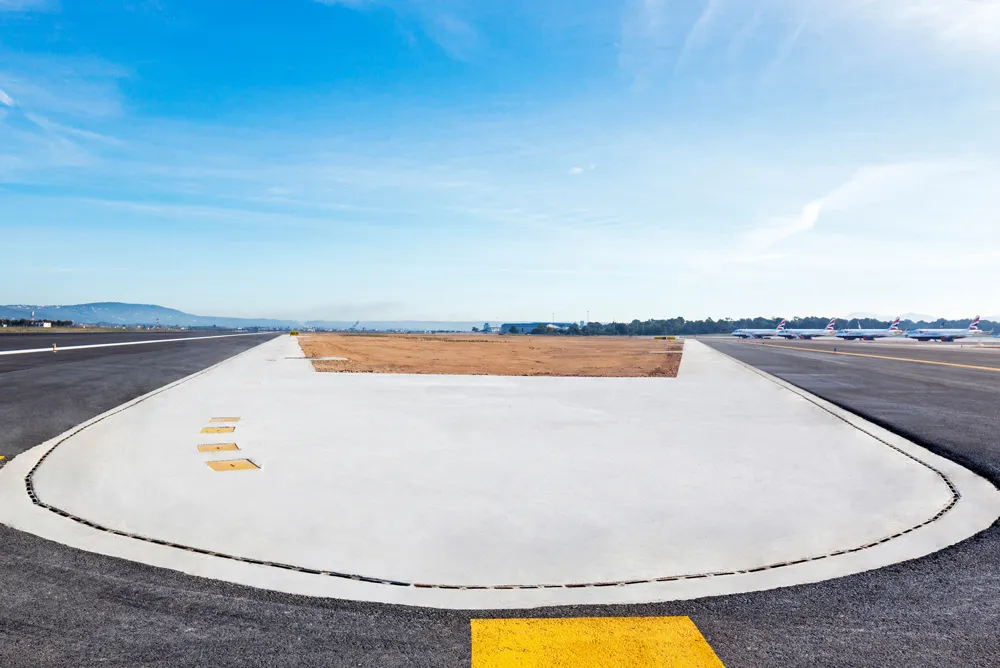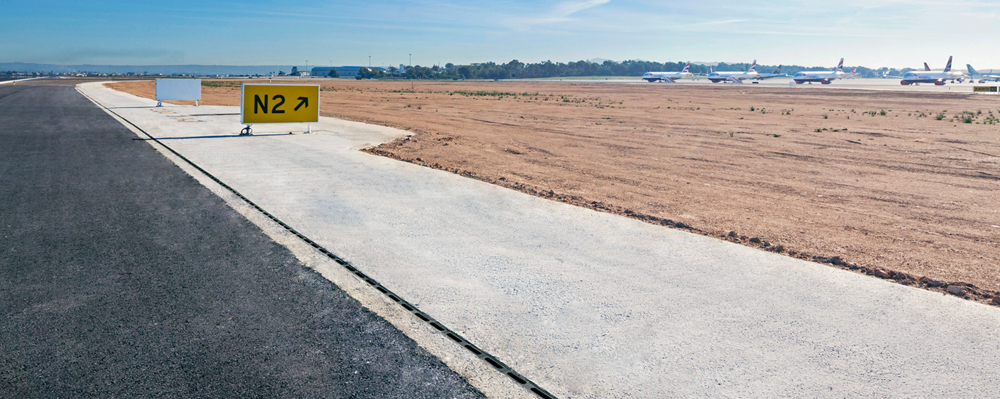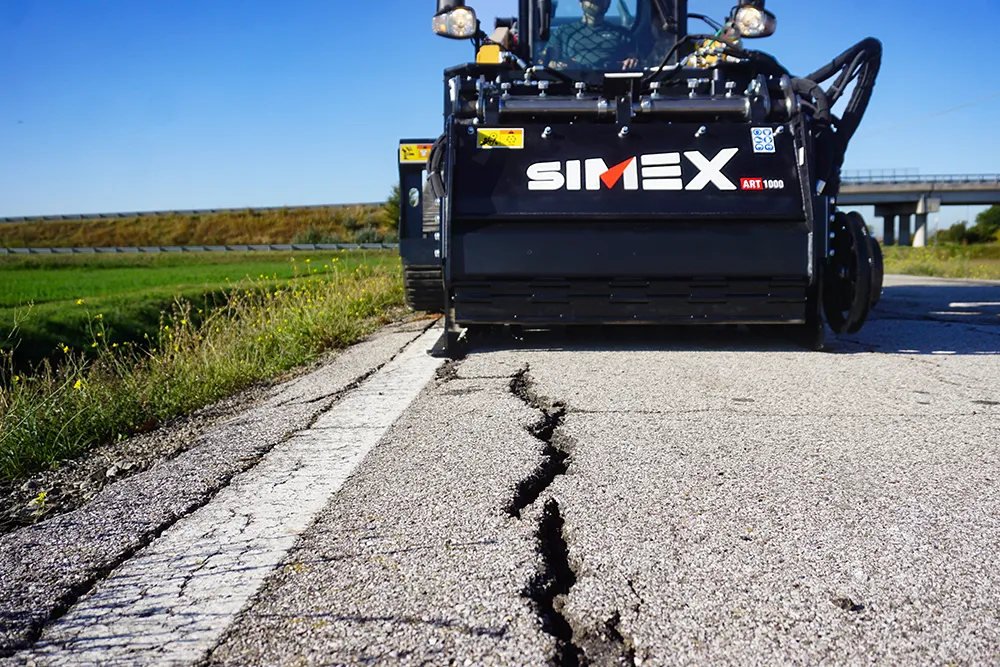
The construction project was carried out with the help of MAB Obras Públicas SL and Sampol Ingeniería y Obras, with consulting services from AERTEC. The runway is 3.27km-long by 45m-wide and now also has almost 6,000 linear metres of the new ACO Qmax Neo high-capacity drainage channel for the collection and evacuation of rainwater and wastewater.
Spanish Airports and Air Navigation (AENA) required the northern runway of Palma de Mallorca Airport to meet the highest standards for safety and reliability.
As a result, AENA looked for the replacement of all beacons and existing light signals with LED technology, as well as the renovation of the runway's surface. The switch to LEDs was intended to improve energy efficiency while AENA wanted to improve the runways and build two rapid exit taxiways for aircraft. To increase safety on the runways, the rainwater drainage system was also refurbished to prevent flooding. This new water evacuation system was designed with 8,000 linear metres of maximum-capacity drainage channels, most of which are the new ACO Qmax NEO 300 model.
This system has a circular channel with a diameter of 300mm. This allows the collection of rain and wastewater up to 550litres/second without a gradient. The channels also offer an F900 load rating allowing the units to withstand the passage of aircraft or heavy-duty vehicles.
In addition to collecting water, Qmax allows water to build up within the channel capacity, regulating the volume of water that enters the sewer system and allowing for the effective control of peak flows during a storm. The chosen grate was the cast iron Q-FLOW model. The easy assembly and modularity of the ACO Qmax Neo 300 was also important. Supplied in 2m-long pre-molded pieces that are stackable and transportable, the technicians were able to handle and position the components within the tight timeframe for the refurbishment of the airport.

In addition to the Qmax drainage channels, 11 high-strength Combipoint PP grates have also been installed on the sides of the runways and 46 circular Multitop cast iron manhole covers.
The ACO DRAIN Qmax Neo is a new member of the ACO Qmax family, which now includes the range of sizes from 150mm, 225mm, 300mm, 350mm up to egg-shaped 550mm, 700mm and 900mm. Integrated gaskets make the channel watertight and all sizes can be combined in a project by tailor-made inlet shafts and inspection elements to meet a project’s hydraulic needs. In case of areas without a terrain gradient, special height adapters can be used to achieve a slope.
A pavement beam provides reinforcement and positioning during installation, while concrete flows through the top part of the product. Installation is simplified with the use of a special jig that keeps the product in place during the process.









